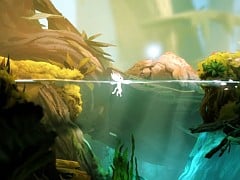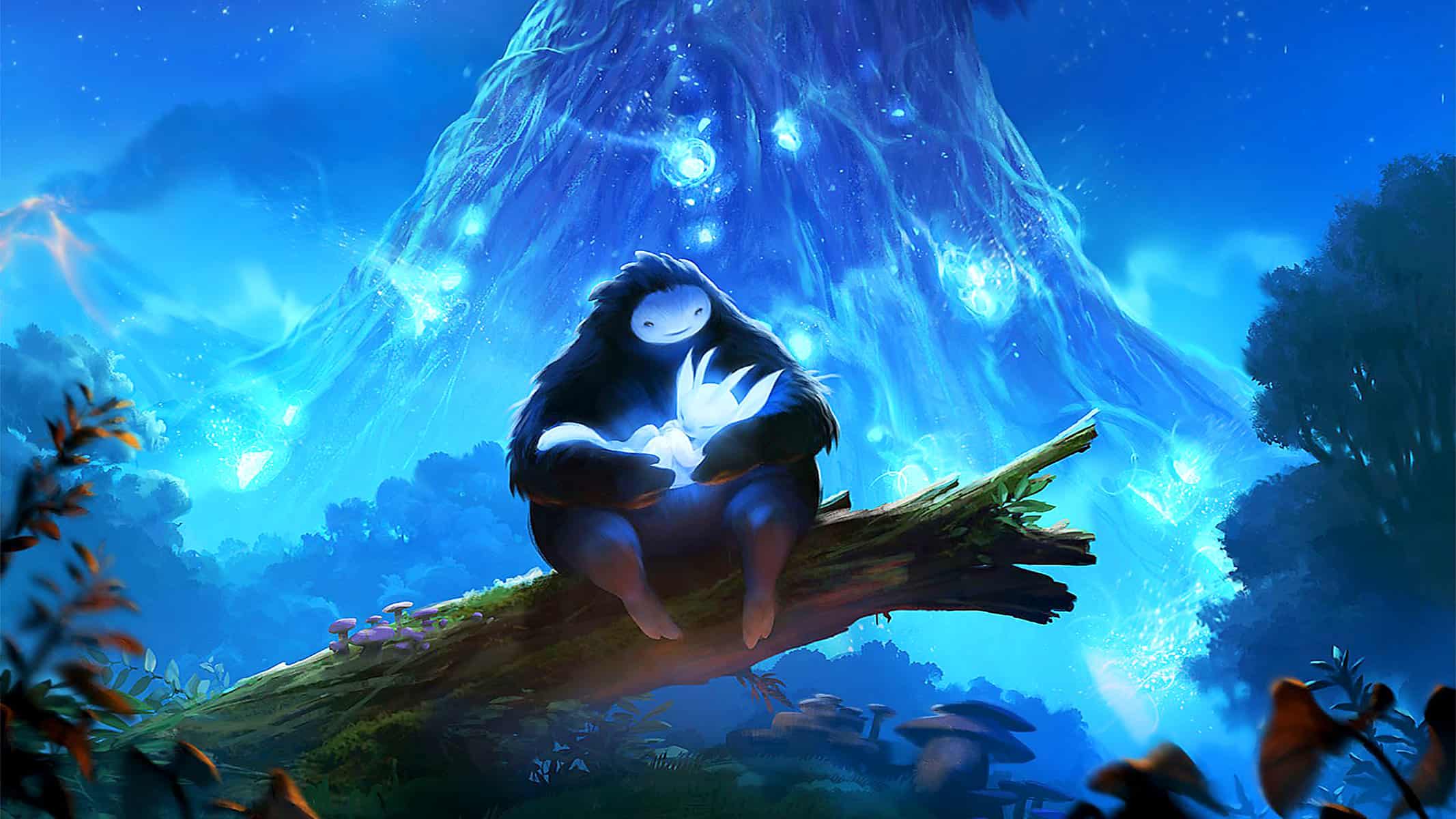You can trust VideoGamer. Our team of gaming experts spend hours testing and reviewing the latest games, to ensure you're reading the most comprehensive guide possible. Rest assured, all imagery and advice is unique and original. Check out how we test and review games here
My heart was pounding like I’d just ran to catch the last bus home. A glorious moment of accomplishment was quickly followed by a realisation that my hands were shaking. I’d been sat on a sofa, Xbox One controller in hand, but the stress, relief, achievement and fatigue were real. Ori and the Blind Forest might well be the most beautiful 2D platformers (or games, full stop) I’ve ever seen, but its true brilliance lies in its ability to push you to the limit, very rarely going too far. You can always do better and the thrill when you do is immense.
The setup, which I won’t spoil, couldn’t be sadder, made all the more emotional by the exquisite way the dev team at Moon Studios tells the tale. The gorgeous ethereal art and impeccable pacing combine to make the first sequence more memorable than entire games manage in tens of hours. The visual quality continues throughout, but the game quickly becomes a skill-based platformer that is as devious as it is good looking.
Ori, a rabbit-like white spirit, initially has the most basic platforming moves, able to jump and perform weak attacks using companion Sein – a small blue guide who isn’t dissimilar to Zelda’s Navi. Over the course of the adventure Ori and Sein gain enhanced and new skills, including double jumping, wall-running, super jumping, a stomp attack and dashing. These make the duo more deadly while also open up areas in classic Metroidvania fashion. There’s a wonderful sense of progression, with the game world coming together magnificently as more and more is revealed. As previously inaccessible areas are opened up they become throughways to zones you had visited earlier, making individual parts one big whole that can be traversed completely without a single load screen – even doorways to special enclosed stages don’t present you with any pauses to the adventure.
As I’ve already said, Ori and the Blind Forest isn’t a simple game. While its ever so pretty visuals and swooping orchestral score might give the impression this is a game for everyone to enjoy, carrying you along for the ride like an interactive cartoon, as soon as the first difficulty spike hits I expect some players will give up. That’s a shame, but it’s this difficulty that makes for such a rewarding experience. The ability to launch Ori off projectiles and enemies is neat at first but becomes a core mechanic: at the same time Ori connects, the projectile is fired in the opposite direction to assist in environmental puzzles. Once everything clicks into place, putting all your skills together to combat enemies, solve conundrums and navigate perilous environments feels great.
For the most part the challenge is fair. You might pull your hair out and swear, but you’ll be cursing yourself not the game, knowing where you went wrong and eager to give it another go straight away. The game’s save system, which lets you place checkpoints wherever you want (if you’re on safe ground) as long as you’ve got a single full energy cell (expanded as you play and refilled using crystals) means you can usually choose to bank your progress if you feel like you’ve just beaten an especially tough section. This system creates seemingly endless mini-challenges which are stressful while you’re in the moment but wonderful once you’re on the other side.
Unfortunately some the game’s escape sequences, which change the formula, break the mould too much. At various points you’ll find Ori in the middle of a disastrous situation where meandering gets you killed, instantly. These escapes are races against time, your own quick thinking and reaction speed, and for the most part are thrilling set-pieces that are among the game’s best moments. But they are also substantially different from the rest of the game: You can’t save during them, and you will die. Learning the route and what you need to do when in order to stay alive is the order of the day, and you’ll have to be on top of your game to put all your skills together. You might think you can’t do it, get frustrated at your own inability to do what your head is telling you, but crucially these sequences don’t feel unfair – that is apart from the game’s final sequence. The fact that Moon Studios managed to create such a finely tuned experience only for it to crumble slightly at the end is disappointing. A run from a familiar foe, the end is a dramatic and showy amalgamation of everything you’ve done until that point, but also the only time I felt I was being unfairly punished.
To close on a low point is a real shame, but the extreme highs carry Ori and the Blind Forest through to greatness, if not quite flawlessness. Rarely is a game able to be so devilish in its gameplay yet so touching in its story. For those willing to embrace the difficulty, Moon Studios has created one of the few must-have Xbox One console exclusives.
Version Tested: Xbox One
Ori and the Blind Forest is exactly what the Xbox One needs
The Xbox One needs exclusives. A console that is technically inferior to Sony’s PS4, its image has suffered as multiplatform comparisons generally point gamers in one direction. And Microsoft’s reliance on big third-party titles (a policy it used brilliantly during the Xbox 360’s days) is emphasising the fact that the big black box just isn’t as powerful as Sony’s 20 million selling sales behemoth.
Microsoft needs to invest in more exclusives, first-party or otherwise, as it’s the only way the console will be talked about for the games and not its lacking graphical ability. The company generally packs out the last quarter of the year, but Ori and the Blind Forest is a shining light in period where Xbox One gamers would otherwise have been left looking on at Sony’s line-up in awe. While The Order might be a visually impressive flash in the pan, it was a big exclusive released outside the packed pre-Christmas period. Add to that the soon to be released (and highly anticipated) Bloodborne, a raft of exclusive indie games, intriguing horror title Until Dawn and PS4 remaster Tearaway Unfolded and Ratchet and Clank likely before September, and it’s clear Sony isn’t stacking things at the end of the year.
Ori and the Blind Forest should make PS4 owners (who don’t own a gaming PC) look up and take notice after laughing at Screamride only a few weeks earlier. It might not sell systems directly, but it sure as hell will get people talking about the console for the right reasons. Microsoft needs more of this to change the conversation, but it looks as though they are once again pinning all their hopes on a Q4 line-up while Sony mops up with better multiplats and more exclusives. This needs to change.
Ori and the Blind Forest
- Platform(s): Nintendo Switch, PC, Xbox 360, Xbox One
- Genre(s): Adventure, Platformer







